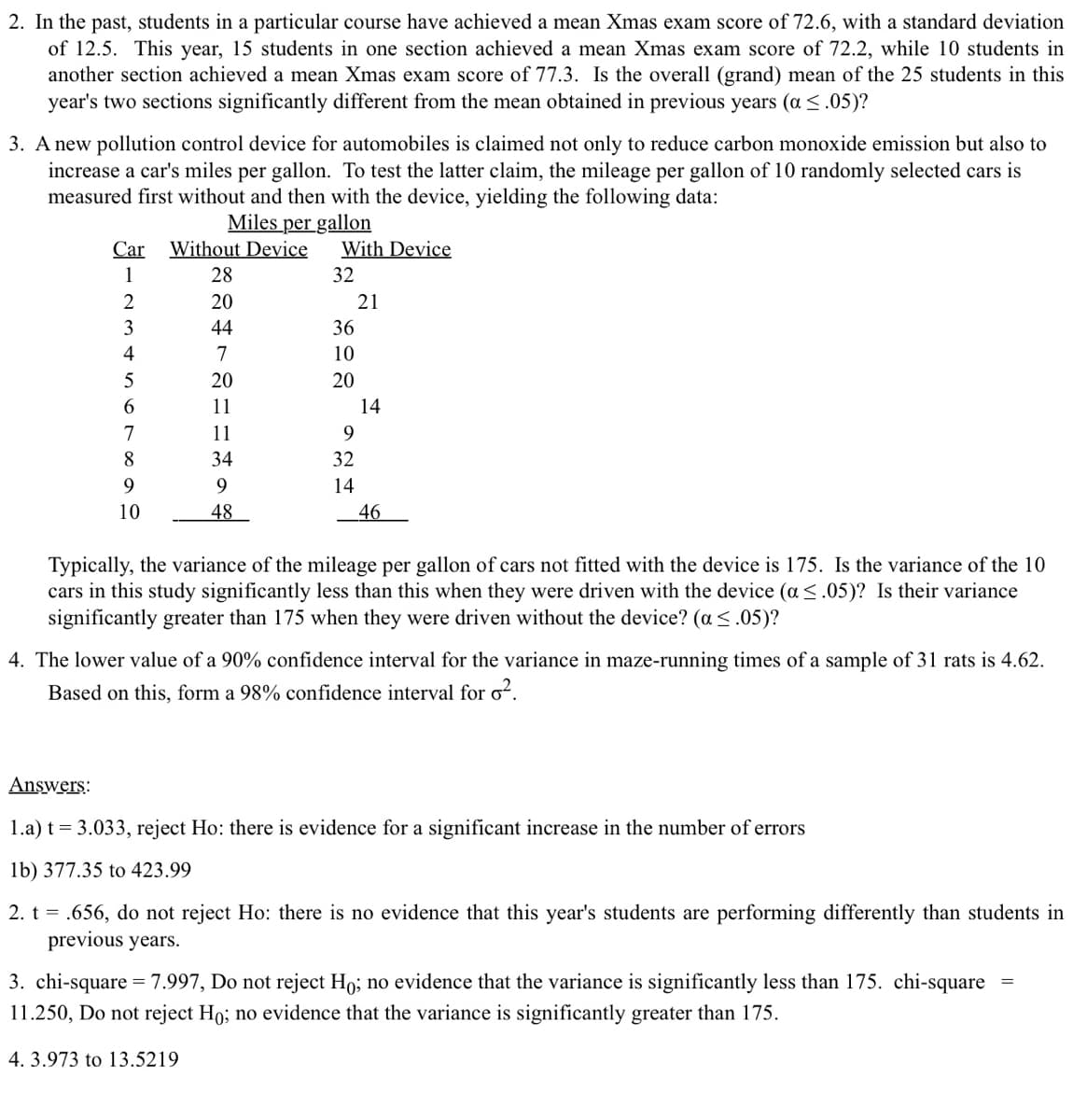In the past, students in a particular course have achieved a mean Xmas exam score of 72.6, with a standard deviation of 12.5. This year, 15 students in one section achieved a mean Xmas exam score of 72.2, while 10 students in another section achieved a mean Xmas exam score of 77.3. Is the overall (grand) mean of the 25 students in this year's two sections significantly different from the mean obtained in previous years (a ≤.05)?
In the past, students in a particular course have achieved a mean Xmas exam score of 72.6, with a standard deviation of 12.5. This year, 15 students in one section achieved a mean Xmas exam score of 72.2, while 10 students in another section achieved a mean Xmas exam score of 77.3. Is the overall (grand) mean of the 25 students in this year's two sections significantly different from the mean obtained in previous years (a ≤.05)?
Glencoe Algebra 1, Student Edition, 9780079039897, 0079039898, 2018
18th Edition
ISBN:9780079039897
Author:Carter
Publisher:Carter
Chapter10: Statistics
Section10.4: Distributions Of Data
Problem 19PFA
Related questions
Question
Answers:
2. t = 0.656, do not reject Ho: there is no evidence that this year's students are performing differently than students in previous years.
3. chi-square = 7.997, Do not reject H0; no evidence that the variance is significantly less than 175. chi-square = 11.250, Do not reject H0; no evidence that the variance is significantly greater than 175.
4. 3.973 to 13.5219

Transcribed Image Text:2. In the past, students in a particular course have achieved a mean Xmas exam score of 72.6, with a standard deviation
of 12.5. This year, 15 students in one section achieved a mean Xmas exam score of 72.2, while 10 students in
another section achieved a mean Xmas exam score of 77.3. Is the overall (grand) mean of the 25 students in this
year's two sections significantly different from the mean obtained in previous years (a ≤.05)?
3. A new pollution control device for automobiles is claimed not only to reduce carbon monoxide emission but also to
increase a car's miles per gallon. To test the latter claim, the mileage per gallon of 10 randomly selected cars is
measured first without and then with the device, yielding the following data:
Miles per gallon
Car Without Device
1
2
3
4
5
6
7
8
9
10
28
20
44
7
20
11
11
34
9
48
With Device
32
36
10
20
9
32
14
21
14
46
Typically, the variance of the mileage per gallon of cars not fitted with the device is 175. Is the variance of the 10
cars in this study significantly less than this when they were driven with the device (a ≤.05)? Is their variance
significantly greater than 175 when they were driven without the device? (a ≤.05)?
4. The lower value of a 90% confidence interval for the variance in maze-running times of a sample of 31 rats is 4.62.
Based on this, form a 98% confidence interval for ².
Answers:
1.a) t = 3.033, reject Ho: there is evidence for a significant increase in the number of errors
1b) 377.35 to 423.99
2. t = .656, do not reject Ho: there is no evidence that this year's students are performing differently than students in
previous years.
3. chi-square = 7.997, Do not reject Ho; no evidence that the variance is significantly less than 175. chi-square
11.250, Do not reject Ho; no evidence that the variance is significantly greater than 175.
4. 3.973 to 13.5219
=
Expert Solution
This question has been solved!
Explore an expertly crafted, step-by-step solution for a thorough understanding of key concepts.
Step by step
Solved in 5 steps with 22 images

Recommended textbooks for you

Glencoe Algebra 1, Student Edition, 9780079039897…
Algebra
ISBN:
9780079039897
Author:
Carter
Publisher:
McGraw Hill

Glencoe Algebra 1, Student Edition, 9780079039897…
Algebra
ISBN:
9780079039897
Author:
Carter
Publisher:
McGraw Hill